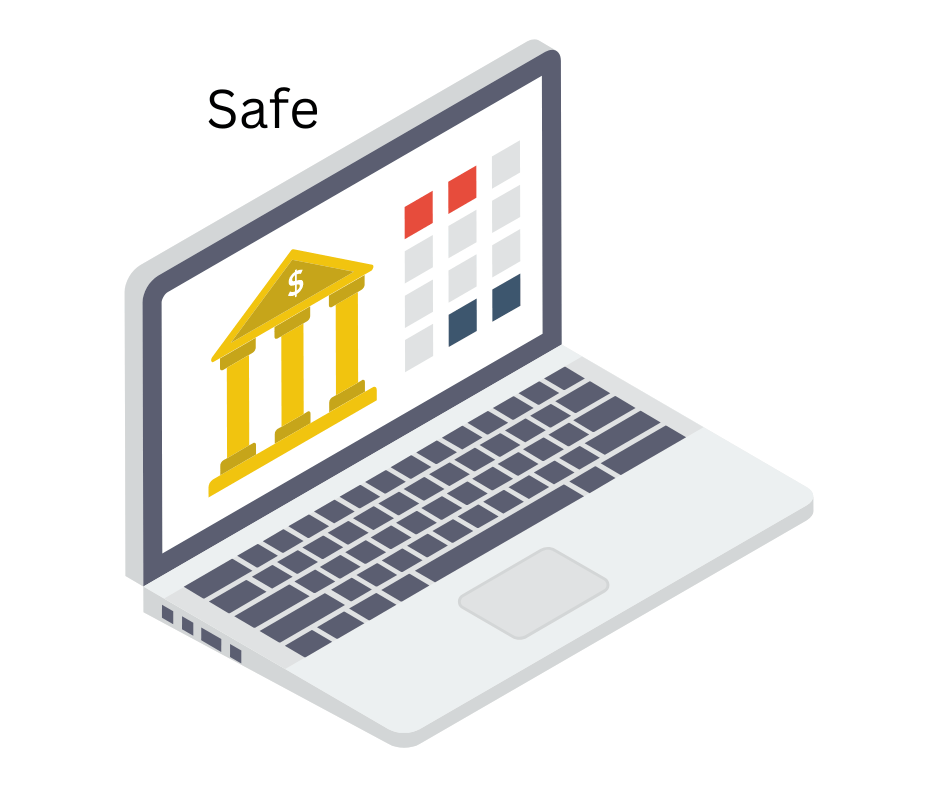The internet has made banking easier than ever before. Nowadays, you can manage your bank account, transfer money, and pay bills all from the comfort of your own home. However, with the ease of online banking comes the risk of fraud and identity theft. Hackers are constantly finding new ways to access your sensitive information, putting your identity and your money at risk. To help you stay safe while using online banking, we’ve put together some tips to protect your identity and your money.
Online banking has become a popular way for people to manage their finances, but it’s important to take precautions to protect your identity and your money. Hackers are always looking for ways to gain access to your sensitive information, so it’s essential to be proactive when it comes to online security. By following these tips, you can reduce your risk of becoming a victim of identity theft or financial fraud.
2. Use a Strong Password
Your online banking password is the first line of defense against cybercriminals. When creating a password, make sure it’s strong and unique. Avoid using easily guessable information, such as your name, date of birth, or address. Use a mix of uppercase and lowercase letters, numbers, and symbols. It’s also a good idea to avoid using the same password for multiple accounts.
3. Enable Two-Factor Authentication
Two-factor authentication adds an extra layer of security to your online banking account. With two-factor authentication, you’ll need to enter a code in addition to your password to access your account. This code is usually sent to your phone via text message or through an authentication app. By enabling two-factor authentication, you’ll be able to better protect your identity and your money.
4. Be Wary of Phishing Scams
Phishing scams are a common way for cybercriminals to steal your sensitive information. Phishing scams typically involve an email or text message that appears to be from a legitimate company, such as your bank. The message will ask you to click on a link or provide your login information. If you receive an unsolicited message from your bank, be wary and double-check the legitimacy of the message before clicking on any links or providing any information.
5. Avoid Using Public Wi-Fi
Public Wi-Fi networks can be vulnerable to cyber attacks. Avoid accessing your online banking account when connected to public Wi-Fi, as it’s possible for hackers to intercept your data. If you must use public Wi-Fi, use a virtual private network (VPN) to encrypt your data and protect your identity.
6. Keep Your Computer Up-to-Date
Keeping your computer up-to-date with the latest security patches is essential for online security. Hackers often exploit vulnerabilities in older software, so it’s important to keep your operating system and other software up-to-date with the latest patches and updates.
7. Use Anti-Virus and Anti-Malware Software
Anti-virus and anti-malware software can help protect your computer from malicious software and other cyber threats. Make sure to keep your anti-virus and anti-malware
8. Monitor Your Accounts Regularly
One of the most important things you can do to protect your identity and your money is to monitor your accounts regularly. Check your bank statements and transaction history on a regular basis to ensure there are no unauthorized transactions. If you notice any suspicious activity, report it to your bank immediately.
9. Be Careful When Sharing Information
Be careful when sharing your personal or financial information online. Only provide this information to trusted websites or companies. If you’re unsure about a website or company, do your research before providing any information. Avoid sharing your social security number, account numbers, or other sensitive information unless it’s absolutely necessary.
10. Use Secure Websites
When accessing your online banking account, make sure you’re using a secure website. Look for the “https” in the website address, which indicates that the website is using encryption to protect your data. Avoid using unsecured websites or clicking on links in unsolicited emails or messages.
11. Log Out When You’re Finished
When you’re finished using your online banking account, make sure to log out. This is especially important if you’re using a shared computer or device. Logging out can help prevent unauthorized access to your account.
12. Don’t Save Sensitive Information
Avoid saving sensitive information, such as passwords or account numbers, on your computer or mobile device. If your device is lost or stolen, this information can be easily accessed by unauthorized individuals. Instead, write down this information and store it in a secure location.
13. Conclusion
Online banking has made managing your finances more convenient than ever before. However, it’s important to take precautions to protect your identity and your money. By following these tips, you can reduce your risk of becoming a victim of identity theft or financial fraud.
14. FAQs
- What should I do if I notice unauthorized activity on my account?
- Report the activity to your bank immediately and take steps to protect your identity.
- How can I tell if a website is secure?
- Look for the “https” in the website address and check for a padlock icon in the browser’s address bar.
- Can two-factor authentication be bypassed by hackers?
- While it’s possible for two-factor authentication to be bypassed, it’s still an effective way to protect your online banking account.
- Is it safe to access my online banking account on a public computer?
- No, it’s not recommended to access your online banking account on a public computer as it’s possible for your information to be compromised.
- How often should I change my online banking password?
- It’s recommended to change your online banking password every 90 days or whenever there’s a potential security risk.
